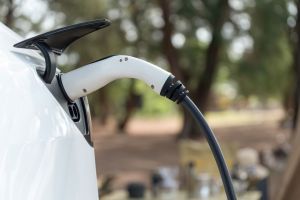We Asked Users
This survey was presented to a prequalified TCD audience in contextually relevant web articles and newsletters.
Survey participants self-selected two times, first when deciding to consume the host content and then again when deciding to participate in the survey.
Which factor would motivate you to pay more for a sustainable product?
Please select one.
Which factor would motivate you to pay more for a sustainable product?Survey Results
356 Progress Focus:
1,209 Money Focus:
257 Quality Focus:
732
Aggregate Insights
The plurality vote for "Superior quality" suggests that mainstream consumers aren't generally inclined to pay more for sustainable products merely because they're sustainable.
The 30% vote for "I wouldn't pay more" simultaneously suggests (a) a robust market for luxury sustainable products and (b) a meaningful opportunity to educate consumers about the superior quality of high-end sustainable goods.
The deep underperformance of "Trendier style" suggests that most consumers aren't seeking chic status from luxury sustainable goods.
Further polling could retarget the "I wouldn't pay more" segment to determine the sentiments and motivations underlying the refusal, with a particular emphasis on whether the segment is broadly opposed to sustainability in general.
Contextual splits are determined by the topical focus and interests of the audience members participating in the survey, as described in more detail in the Insights and Methodolgy sections below.
356 Progress Focus:
1,209 Money Focus:
257 Quality Focus:
732
Split Insights
The overperformance of (a) "Bigger environmental impact" with the sustainability-focused audience and (b) "Superior quality" with the quality-focused audience underscores the importance of targeting specific messages to specific audience segments.
The overperformance of "I wouldn't pay more" with the progress-focused audience — coupled with its underperformance among the money-focused audience — suggests that cost concerns aren't the primary motivation for consumers who refuse to pay more for high-end sustainable goods.
Further polling could explore sentiment around various categories of sustainable products — e.g., clothing vs. appliances vs. cosmetics — to determine which types of goods consumers are most willing to pay more for.
Methodology
This poll was conducted among a prequalified TCD audience of likely adopters via distribution in 9 syndicated web articles. It received a total of 2,561 responses and generated segmented data across 4 primary contextual splits.
TCD surveys are embedded inline in contextually relevant web articles and newsletters. Survey participants self-select two times, first when deciding to consume the host content and then again when deciding to participate in the survey.
Contextual splits are determined by the topical focus and interests of the audience members participating in the survey. Split analysis explores the degree to which different messages — and the self-selected participants who seek them out — can shape consumer sentiment.







